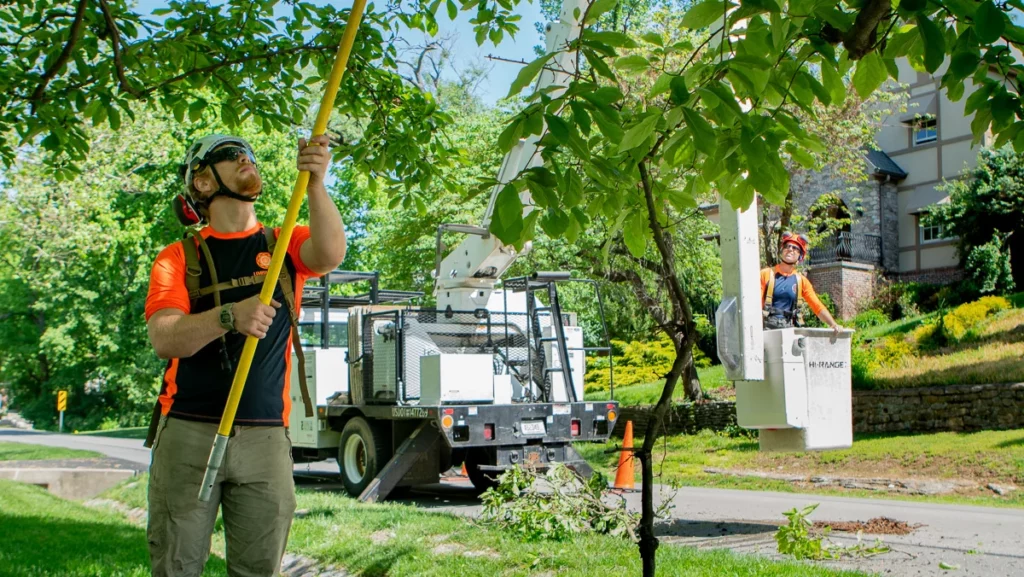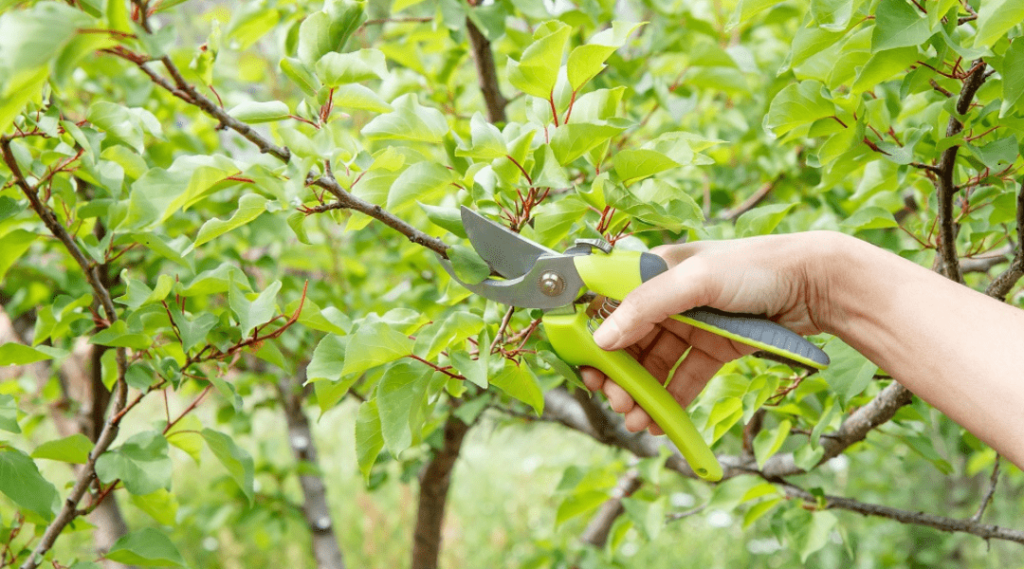Trees are an integral part of any garden, providing shade, beauty, and enhancing the overall landscape. However, like any living organism, trees require care and maintenance to thrive and stay healthy. One essential aspect of tree care is regular pruning. Tree pruning involves the selective removal of branches and foliage to improve tree health, structure, and aesthetics. Understanding the importance of tree pruning is crucial for garden owners who want to ensure the vitality of their green spaces.
Understanding the Importance of Tree Pruning
Tree pruning plays a significant role in maintaining garden health, and it offers numerous benefits for both the trees and the overall landscape. By removing dead or diseased branches, tree pruning helps prevent the spread of diseases and pests. Additionally, it promotes proper growth and structure, reducing the risk of branch failure and enhancing the tree’s ability to withstand harsh weather conditions. Tree pruning also improves the aesthetics of the garden, providing a neat and well-maintained appearance.
When selecting tree pruning services garden owners should consider several factors to ensure they choose the right professionals for the job. Experience, qualifications, and insurance coverage are crucial aspects to verify. Additionally, obtaining referrals and reading reviews can help assess the quality of the pruning services provided. By selecting reputable and reliable professionals, garden owners can have peace of mind knowing that their trees are in capable hands.
The Role of Tree Pruning in Garden Health
Tree pruning directly contributes to the overall health of the garden. By eliminating dead or dying branches, pruning prevents decay and prevents the spread of diseases and pests. Deadwood can attract harmful insects and serve as a breeding ground for fungi and bacteria, which can damage the tree and neighboring plants. Regular pruning ensures that the garden remains free from potential threats and reduces the risk of infestation or infection. Learn more about fungi and bacteria at https://askabiologist.asu.edu/explore/puzzling-pathogens
In addition to disease prevention, pruning also promotes healthy growth. By removing overcrowded branches, the tree’s canopy becomes more open and receives adequate sunlight, air circulation, and nutrients. This allows for more vigorous growth and improves the tree’s ability to produce vibrant foliage and flowers. Pruning also encourages the development of a strong and well-balanced structure, reducing the likelihood of branch breakage and keeping the tree stable.

The Science Behind Tree Pruning
Tree pruning is not just a task carried out for aesthetic purposes; it is supported by scientific principles. Proper pruning techniques are based on an understanding of tree biology and how trees respond to various cuts and removals. When performed correctly, pruning stimulates the tree’s natural healing responses, leading to the formation of callus tissue that seals off wounds and prevents decay. By following established pruning guidelines, garden owners can ensure that their trees remain healthy and resilient.
Furthermore, tree pruning can also have a positive impact on the environment. When trees are pruned, it allows for better air circulation around the tree, which can help reduce the risk of fungal diseases. Additionally, pruning can improve the tree’s ability to absorb carbon dioxide and release oxygen, contributing to cleaner and healthier air. The removal of dead branches also eliminates potential hazards, reducing the risk of falling debris during storms or strong winds. Click here to learn more about carbon dioxide.
Moreover, tree pruning can be a form of art. Skilled arborists carefully assess each tree’s unique structure and growth patterns before making precise cuts to enhance its natural beauty. Pruning can shape the tree’s silhouette, creating a visually appealing focal point in the garden. It can also be used to create clearances for walkways or driveways, ensuring that the tree integrates seamlessly into the overall landscape design.
The Benefits of Regular Tree Pruning
Regular tree pruning offers a multitude of benefits that contribute to garden health and longevity. Understanding these advantages can help garden owners appreciate the significance of incorporating pruning into their regular maintenance routine.
Enhancing Tree Growth and Structure
Proper tree pruning stimulates the growth and development of trees, resulting in stronger and more structurally sound specimens. By eliminating weak or crossing branches, pruning allows the tree to allocate resources more efficiently, supporting the growth of healthy branches and foliage. It also encourages upward growth and prevents the tree from becoming top-heavy, reducing the risk of toppling over during storms or high winds.
Preventing Diseases and Pests
Tree pruning plays a crucial role in preventing the spread of diseases and controlling pest infestations. By removing infected or infested branches, garden owners can stop the progression of diseases and halt the invasion of harmful insects. Regular pruning also enables gardeners to identify early signs of disease or pest presence, allowing for timely intervention and treatment. By staying vigilant and proactive, garden owners can ensure that their trees remain healthy and free from destructive pathogens and pests.
Improving Garden Aesthetics
A well-pruned tree adds beauty and charm to any garden. By shaping the tree’s canopy and removing unwanted branches, pruning enhances the overall aesthetics of the garden. It creates a visually pleasing environment, providing a sense of balance and harmony. Proper pruning also improves the tree’s natural form and structure, allowing it to showcase its unique characteristics and beauty.
In addition to the practical benefits of regular tree pruning, there are also some fascinating ecological aspects to consider. When trees are pruned, they respond by producing new growth, which in turn increases their capacity to absorb carbon dioxide from the atmosphere. This process, known as carbon sequestration, plays a vital role in mitigating climate change by reducing greenhouse gas levels.
Furthermore, tree pruning can have a positive impact on wildlife. By selectively removing branches, garden owners can create open spaces within the tree canopy, allowing sunlight to reach the ground. This sunlight stimulates the growth of understory plants, providing valuable food and habitat for various species of birds, insects, and small mammals. The increased biodiversity resulting from well-pruned trees contributes to the overall health and resilience of the garden ecosystem.
So, while the benefits of regular tree pruning are evident in terms of tree growth, disease prevention, and garden aesthetics, it is important to recognize the broader ecological implications as well. By incorporating pruning into your regular maintenance routine, you not only enhance the health and beauty of your garden but also contribute to the well-being of the planet and its diverse inhabitants.
The Risks of Neglecting Tree Pruning
While the benefits of regular tree pruning are clear, neglecting this essential task can have severe consequences for both trees and gardens.
Tree pruning is not just about aesthetics; it plays a crucial role in maintaining the health and longevity of trees. By removing dead or diseased branches, pruning helps prevent the spread of infections and promotes new growth. Additionally, proper pruning techniques can shape the tree’s structure, improving its overall strength and resilience against harsh weather conditions.
Safety Hazards of Overgrown Trees
Overgrown trees pose a significant safety risk, especially during storms or strong winds. Weak or overextended branches are more likely to break or fall, endangering both property and individuals. Neglecting tree pruning increases the chances of branch failure and presents a hazard to buildings, vehicles, and people in the vicinity. Regular pruning mitigates these risks by removing potential threats while maintaining the natural beauty of the tree.
Furthermore, overgrown trees can also obstruct power lines, creating a fire hazard and increasing the risk of electrical outages. Proper pruning not only reduces these risks but also enhances the overall aesthetics of the landscape, creating a safer and more visually appealing environment.
Impact on Overall Garden Health
Failure to prune trees can have a detrimental effect on the overall health of the garden. Overcrowded branches limit sunlight and air circulation, creating a favorable environment for pests and diseases to thrive. Insufficient light can also inhibit the growth of other plants, leading to a decline in the vitality and diversity of the garden. Regular pruning ensures that trees and surrounding vegetation receive adequate light and airflow, promoting a flourishing and balanced ecosystem.
In addition, neglected tree pruning can result in nutrient competition among plants in the garden. When trees are left unpruned, they consume a significant portion of available nutrients, depriving other plants of essential resources for growth. This imbalance can lead to stunted growth and decreased flowering or fruit production in the garden. Proper pruning practices help maintain a harmonious nutrient balance, allowing all plants to thrive and contribute to a vibrant garden ecosystem.
Choosing the Right Tree Pruning Services
Tree pruning is a specialized task that requires expertise and knowledge. Hiring professional tree pruning services is essential to ensure the job is done correctly and safely.
Understanding Different Pruning Techniques
Professional tree pruners employ various techniques depending on the specific needs and characteristics of each tree. Understanding these techniques can help garden owners communicate their requirements effectively and ensure that the desired outcomes are achieved. Techniques such as crown thinning, crown cleaning, and crown reduction serve different purposes and should be applied with proper knowledge and skill. Consulting with professionals can provide valuable insights into the appropriate pruning techniques for different tree species and situations.
The Ideal Tree Pruning Schedule
While tree pruning is essential, timing plays a vital role in achieving optimal results. Pruning at the appropriate times ensures that trees can heal properly and minimizes the risk of stress or damage.
Seasonal Considerations for Tree Pruning
In general, late winter or early spring, when trees are dormant, is an ideal time for pruning. During this period, the absence of leaves makes it easier to assess the tree’s structure and identify necessary cuts. Additionally, pruning during this time minimizes the risk of disease transmission, as many pathogens are less active during the winter months. However, certain tree species may have specific timing requirements, and it is advisable to consult professionals or reference reliable pruning guides to ensure the best results.

Signs Your Trees Need Pruning
Recognizing when trees require pruning is essential to maintain their health and ensure the safety of the garden. Signs that indicate the need for tree pruning include dead or damaged branches, crossed branches, excessive canopy density, and signs of disease or pest infestation. Regular inspection and observation of the trees can help identify these signs early, allowing for prompt action and preventing further damage.
In conclusion, regular tree pruning services are vital for maintaining garden health and ensuring the longevity of trees. Pruning enhances tree growth, prevents diseases and pests, and improves the overall aesthetics of the garden. Neglecting tree pruning poses safety risks and negatively impacts garden health. Choosing the right tree pruning services and understanding different pruning techniques are essential for achieving desired outcomes. Adhering to the ideal tree pruning schedule and recognizing signs of tree pruning needs allows garden owners to maintain vibrant and thriving green spaces. By recognizing the importance of regular tree pruning services, garden owners can enjoy the benefits of healthy trees and a beautiful garden for years to come.
Other resources: Understanding the Costs and Benefits of Professional Tree Pruning Services

